Cleaning and Storing Artists' Brushes
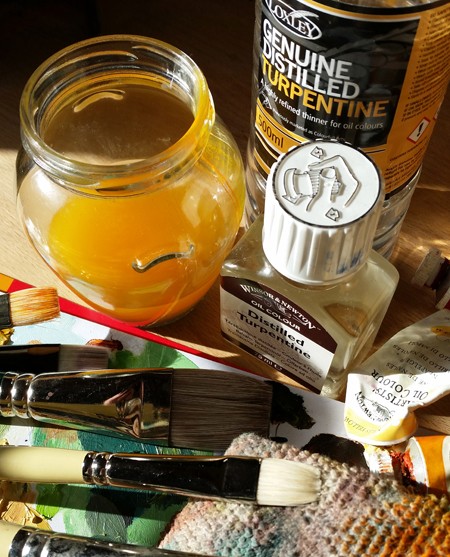
Distilled Turpentine for cleaning Brushes when painting with Oil Colour
Receiving new brushes
Softer brushes such as sable and squirrel will be sold coated with a gum arabic solution, which protects them in transit. It also displays them in the shape they will attain when wet. Some brushes will also come with a plastic tube protecting the head. Once you are ready to start using your new brush, the gum should be easily rubbed off or rinsed out and the tube should be disposed of. These tubes are not meant to be put back on as putting it back on could damage the hair at the ferrule making the brush difficult to re-shape and will stop the brush drying thoroughly which would also damage natural hair.

New brushes dressed with gum arabic and, sometimes, a plastic tube to protect them in transit
Stiffer round brushes may also come with a plastic tube protecting the head and, again, these should be disposed of once you start to use the brush. It is a good idea to wash all brushes, especially bristle brushes, prior to use to remove any loose hairs.
Cleaning round sable, squirrel and blended synthetic brushes used with watercolour, gouache or ink
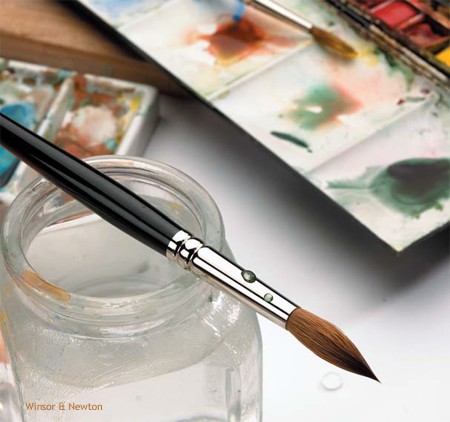
Whilst working, always have a clean pot of water and some absorbent cloth or tissue at hand to clean and re-shape your brushes. Just a quick twirl in the water will remove any paint or ink and then by drawing the brush head across the cloth or tissue whilst gently rolling it, you absorb excess liquid to help the drying process whist re-shaping it into its natural point. The same cleaning can be applied to flat brushes but, instead of rolling, press the hair between two pieces of cloth or tissue for a couple of seconds to soak up the moisture.
A good round brush can also be twirled and then ‘flicked’ to shake off the excess liquid and it will spring back into its point.

Whilst not in use, the brushes should be placed in a brush pot or holder with the head up, laid on the table or placed on a brush rest. A brush should never be left head down standing in water.

Brushes on a Ceramic Brush Rest
Cleaning hog brushes when working with oil Hog Brushes
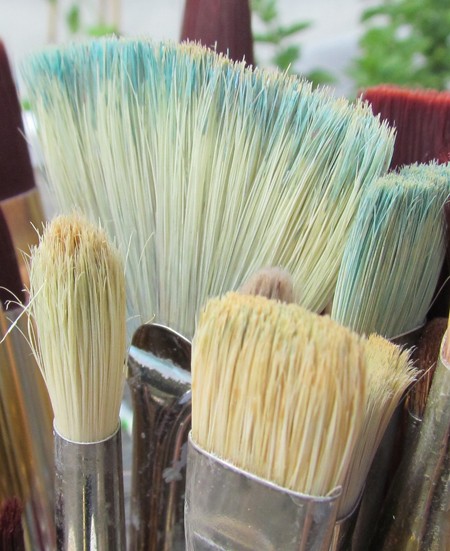
Hog is a rough, tough hair and will take quite a lot of ill-treatment without its performance being affected. A quick dunk in some turpentine will thin any paint on the brush and then a vigorous wipe on a rag will clean it sufficiently to be able to move onto the next colour. The turps does not have to be clean and the rag can be quite coarse. Hog will quickly stain but this is to be expected and this staining will not transfer onto the fresh colour being applied.
It is, however, a good idea to give hogs a thorough clean and condition every few weeks. This will ensure that any paint trapped in the ferrule is removed and will get rid of any sticky residues that the oil and solvents leave on it. Masters Brush Cleaner is an excellent product for this. White spirit or a low odour solvent such as ‘Sansador’ can be used instead of turpentine although personally I stick to distilled turpentine as I find petroleum-based solvents make the brushes stickier.
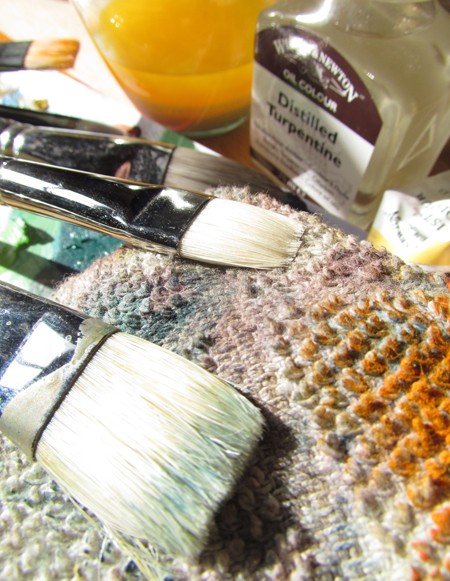
Turps and rags to clean Oil Painting Brushes
Cleaning synthetic or hog brushes used with Acrylic

Acrylic is a water-based paint and so the brushes can be cleaned with water. Whilst painting, the dunk and wipe technique works fine. However, acrylic dries very quickly and, if it is allowed to dry on the brush, the brush will suffer.
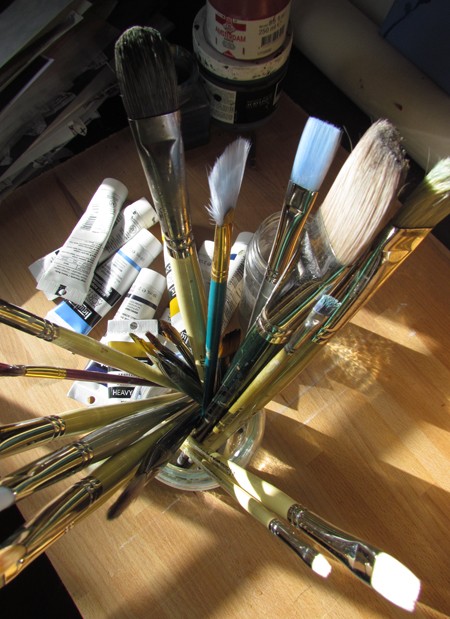
Brushes for painting with Acrylic
After a painting session, it is a good idea to give the brushes a good clean with soap/washing up liquid and water to ensure that there is no colour left where the brush head meets the ferrule because dried paint in this area will compromise the shape of the brush. Making sure they are clean will also stop the bristles or fibres from drying hard and rigid. However, don’t dispose of brushes that have become too rigid because a brush cleaner like Masters can bring them back from the ‘dead’.
Storing Brushes
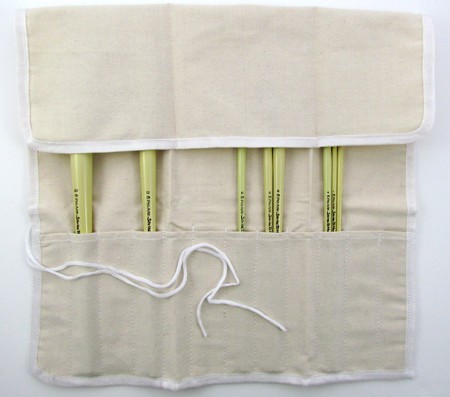
Where possible, leave brushes out to make sure they are dry before storing. If out and about at a class or painting en plein air, a cloth brush roll will help to soak up excess fluid but make sure you open up the roll and leave to air again once back in the studio.

Bamboo rolls are particularly good as they are lightweight and have fabric interiors to cushion the handles whilst their rigid exterior protects the brushes from being bashed around in transit. Boxes with ventilation holes are good too for transporting brushes.
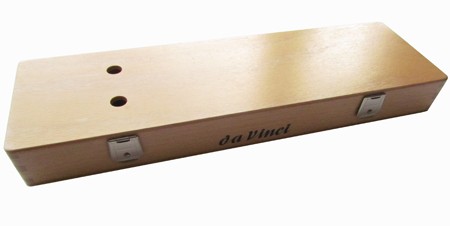
There are a number of ways to store a brush and all work very well for clean and dry brushes. Pots and Brush Stands are great for synthetic and bristle.
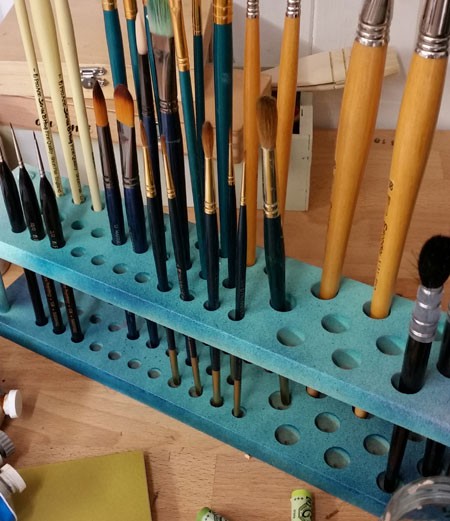
Softer, natural hair will require a little more covering up as they can attract moths. If a roll is used, ensure that the brushes are lying flat and open it up occasionally to check no moths have got in. Brush cases stop the moths but you need to ensure that brush heads do not get squashed against the top of the case or, heaven forbid, trapped in the zip!
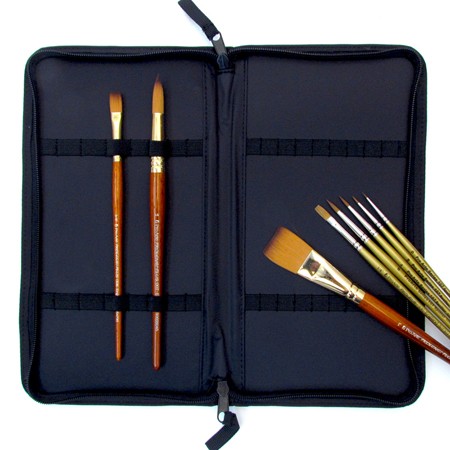
By taking care to clean, dry and store a brush correctly, a quality brush will last you years and will be well worth the initial investment.
